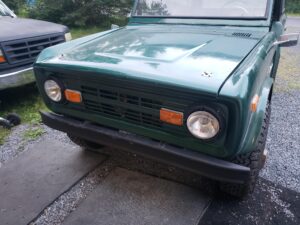Troubleshooting Common Vehicle Issues: A Comprehensive Guide

When it comes to vehicle maintenance, knowledge is power. Understanding how to troubleshoot common vehicle issues can save time, money, and potential headaches down the road. In this blog post, we will explore several typical problems faced by vehicle owners, the possible causes of these issues, and the corrective actions you can take to resolve them.
1. Brake Problems: Pulling to One Side
One of the most concerning issues a driver can encounter is when their vehicle pulls to one side during braking. This can be alarming and could indicate underlying problems that need immediate attention.
Possible Causes:
- Brake fluid, oil, or grease on linings
- Unmatched linings
- Distorted brake shoes
- Frozen or seized pistons
- Incorrect tire pressure
- Front end out of alignment
- Broken rear spring
- Rear brake pistons sticking
- Restricted hose or line
- Caliper not aligned properly with the braking disc
Corrective Actions:
- Install new shoes and linings if contaminated
- Ensure matching linings are installed
- Replace distorted brake shoes
- Disassemble caliper and free up stuck pistons
- Inflate tires to the recommended pressure
- Align the front end
- Replace broken rear springs
- Free up rear brake pistons
- Check for restrictions in hoses and lines
- Realign the caliper if necessary
2. Windshield Wiper Issues
Worn or malfunctioning windshield wipers can severely impede visibility and compromise driving safety, especially during rain or snow.
Common Problems:
- Wiper motor will not run
- Blades do not park properly
- Wipers slap against the windshield
Possible Causes:
- Grounded wiring or faulty switch
- Binding linkage or improperly adjusted wiper arms
- Loose bulkhead connector
- Stuck or broken crank mechanism
Corrective Actions:
- Check for grounded wiring and faulty motor
- Adjust or repair linkage and ensure the switch is operational
- Tighten loose connections
3. Temperature Warnings
Temperature warning lights can indicate severe issues with your vehicle’s cooling system, which is crucial for engine health.
Possible Causes:
- Faulty wiring or sending unit
- Burned-out bulb
Corrective Actions:
- Inspect and repair wiring problems
- Replace the sending unit or verify if the bulb is functional
4. Low Oil Pressure Warning
If your low oil pressure light is illuminated, this could signify inadequate lubrication, which can lead to engine damage.
Possible Causes:
- Faulty sending unit
- Clogged oil filter
- Oil pump problems
Corrective Actions:
- Check the oil levels and pressure gauge
- Replace the oil filter if necessary
- Inspect and possibly replace the oil pump
5. Fuel System Troubles
Issues with fuel delivery can lead to engine starting difficulties and operating instability.
Possible Causes:
- Clogged fuel filters
- Faulty feed pump
- Damaged injection nozzles
Corrective Actions:
- Clean or replace clogged fuel filters
- Test and replace a faulty feed pump
- Inspect the injector nozzles for damage
Conclusion
Regular vehicle maintenance and observation can prevent many common issues from escalating into more significant problems. By recognizing the signs of trouble and understanding how to troubleshoot these issues, vehicle owners can maintain optimal performance and ensure safety on the road. Remember, when in doubt, consult with a professional mechanic who can assist with diagnostics and repairs. Safe driving starts with a well-maintained vehicle!


